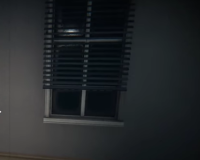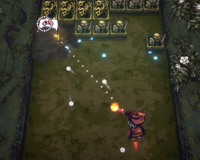
Advertisement
Outlast
Outlast follows the story of a freelance journalist who breaks into a remote psychiatric hospital to uncover evidence of unethical experiments. What begins as an investigation quickly turns into a struggle for survival. Armed only with a camcorder, the player must navigate dark hallways, ruined rooms, and underground tunnels while avoiding deranged patients and twisted security personnel. There are no weapons or combat options, forcing players to depend entirely on stealth, speed, and observation.
Navigating a Hostile Environment
The asylum is designed as a maze of locked doors, broken staircases, and blocked hallways. Players must find ways around obstacles using vents, crawlspaces, and hidden paths. Every step comes with risk. The building is populated with unpredictable threats that patrol in set patterns or respond to noise. The camcorder’s night vision becomes essential in unlit areas, but it drains battery power, creating tension between visibility and survival. Managing resources becomes a constant concern, especially in extended sequences with no clear exit.
Main Survival Features In Outlast
The gameplay centers around a few core systems:
- Limited battery life for the night vision camera
- Hiding spots like lockers and beds for evasion
- Sound-based detection by enemies
- Objective markers that appear only through exploration
- Documents and video logs that provide narrative background
These mechanics are woven into every part of the experience, demanding focus and awareness at all times.
Storytelling Through Atmosphere
The game delivers most of its story through found footage, environmental detail, and short text documents. Bloodstains, scribbled notes, and distorted voices all contribute to the sense that something has gone deeply wrong. There’s a growing realization that what’s happening is about one facility, and part of a larger pattern. The horror escalates slowly, as supernatural elements begin to mix with psychological terror. The player’s isolation increases as allies disappear and escape routes collapse.
Outlast is structured to remove comfort from the player at every stage. Darkness is nearly constant, sound is unreliable, and enemies are always nearby. Each moment is built on the possibility of failure, but also discovery. Rather than empowering the player, the game puts them in the role of an observer who can only record what they see and hope to survive. In doing so, it creates a deeply immersive horror experience that relies on vulnerability, rather than action, to keep the player engaged.

















































































